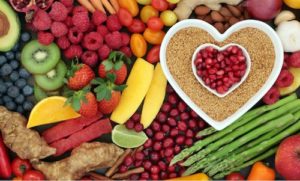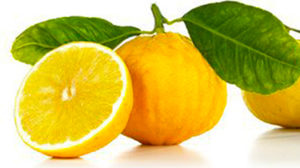With the COVID situation, more and more people are taking a multi-dimensional approach to stay healthy. Is just eating better, or are supplements a line of defense in optimal health?

You are probably under more stress with a greatly diminished work schedule. Social outlets and regular exercise outlets are minimized due to contact restrictions. The likely result is you are feeling more mental stress combined with less resilience in the body because you are off your regular routine.
There is a bit of inference or scientific projection in this area of nutritional defense. Things like pandemic outbreaks don’t make for a good subject pool, so many of these studies look at other areas with similar physiological pathways. Coronary heart disease and cancer are the main study areas. However, there is evidence that nutritional strategies aimed at antioxidant and inflammation reduction may also be necessary. These components have a role in disease prevention, and maybe more so in they can retard the onset or severity of conditions that are more susceptible to, in this case, COVID.
It is true upping your servings of fruits and vegetables has a positive effect on reducing heart disease and cancer. In one of the most recent studies at the Imperial College in London, this initial threshold was re-affirmed as five servings per day. In fact, when the subjects got to the level of 10 servings per day, the results were greatly enhanced. The flip side application is simply only 12.9% of Americans at best get those five servings a day. And no surprise, the number of people at 10 servings per day less than one percent.

There are a number of popular strategies to increase the intake of these power foods. One simple one that is easy to follow is to decrease the number of carbohydrates like french fries or bread by 1/2. And then double the amount of vegetables. That way, the plate stays the same size, yet the nutrient density per kcal goes way up. And ketchup on the fries does not count as a vegetable.
Practically, more is better. However, most people we know do not share rabbit food preferences in the volume dimension. So after a point, there is just so much you can eat. Given the reality of American intakes of fruits and vegetables, are there good supplement options, and are they supported by research? There is solid evidence that certain essential supplements do help with immune responses and fight off stress.

Vitamin C is one of the top nutrients you can consume at this time. If you are deficient in C, your immune system will be impaired, and your possibility of infections increases. Interestingly enough, supplementation with C is a good prevention measure. In the case of already acquired respiratory and other infections, it can be part of an effective treatment plan.
How much C should you consume? Guidelines put this intake at 100-200 milligrams (MG) per day from foods. Oranges are the go-to visual fruit for C, but do they deliver? A medium orange is 70 MG of C. A great start to prevent scurvy. Yet for those who aren’t pirates at sea, you will really need to up your intake. Two other C-rich foods are strawberries and kiwis. In the case of vitamin C, minor supplementation might be wise, depending upon your intake.
Vitamin D is not talked about much in this regard. Yet, this fat-soluble vitamin is an essential line of defense. It is known mostly for its function in bone health by helping to modulate the constant rebuilding of bone. There have been several studies demonstrating low levels of D with increased infection. At the turn of the last century, Cod liver oil, which has significant levels of D, was used to treat tuberculosis.

The problem is very few foods contain vitamin D. Previously, before the ozone issues that removed some of our atmospheric protection from harmful UV-B light, you could get most vitamin D by being outside. Now, most people should use sunscreen for outside activities, and thus the vitamin D effect is lessened due to less time. So, you are still getting some benefit while wearing sunscreen, yet unlikely all the D you need. However, in some studies, food intake plus moderate sunlight exposure did raise elevate D levels. Most people don’t or can’t spend excessive time in the sun, so a supplement is probably a good idea. Your intake should be roughly 400 International Units (IU) per day. In some relatively recent estimates of consumption, Americans averaged between 150-200 IU per day.
In children, not getting enough Zinc can lead to the slowing of growth. In adults, it is a contributory mineral in the immune system functioning at lessened levels. One of Zinc’s most essential functions is with enhancing T-cells, which help regulate immune responses.

Foods with high zinc content include oysters, shell fish, meat, and whole grains, especially fortified breakfast cereals. Intake should typically be 8 mg for women and 11 mg for men. It appears that most people are getting either enough Zinc or are just a bit shy. 55% of the U.S. population is getting enough from a combination of food and supplements.
Polyphenols are plant compounds that chemically can be thought of as long chains of natural alcohol + acid compounds. They occur in a wide variety of fruits and vegetables. Most notably, resveratrol in red wine has received attention over the last few years for health benefits.
In general, polyphenols such as those from the Bergamot fruit have positive research in the areas of prevention of Coronary Heart Disease and other similar conditions through reduction of inflammation, decreased blood lipids, and increased circulation. Polyphenols also have a function in reducing oxidative stress and appear to have a positive role in cancer prevention. These compounds likely have a base effect of improving essential functions such as circulation and removing free radicals, which in turn support immune response.

When viewing polyphenol research, one of the keys is the amount of polyphenol versus the results. This is one where it appears to a point, more is better. And, given then are 8,000 types of polyphenols, separating foods into the most practical classes is not easy. However, eating a variety of fruits and vegetables is a good start. Some supplements on the market provide high levels of polyphenols combined with other essential compounds like Zinc and vitamin C. The capsules that contain compressed and dehydrated fruit and vegetable juice do appear to work. Yet, labeling most of the time does not disclose actual nutrient levels.
It is important if you are taking medications to consult with your physician and health care provider on specific supplement usage. Some supplements can interfere with medications, so a consult about specific supplements is wise before radically changing your routine and intake.
References
Aune D, Giovannucci E, Boffetta P, et al. Fruit and vegetable intake and the risk of cardiovascular disease, total cancer and all-cause mortality-a systematic review and dose-response meta-analysis of prospective studies. Int J Epidemiol. 2017;46(3):1029–1056.
Aranow C. Vitamin D and the immune system. J Investig Med. 2011;59(6):881–886.
Bailey RL, Dodd KW, Goldman JA, Gahche JJ, Dwyer JT, Moshfegh AJ, et al. Estimation of total usual calcium and vitamin D intakes in the United States. J Nutr. 2010;140:817-822.
Bales CW, DiSilvestro RA, Currie KL, Plaisted CS, Joung H, Galanos AN., Lin PH. Marginal zinc deficiency in older adults: responsiveness of zinc status indicators. Journal of the American College of Nutrition. 1994;13(5), 455-462.
Carr AC, Frei B. Toward a new recommended dietary allowance for vitamin C based on antioxidant and health effects in humans. Am. J. Clin. Nutr. 1999;69:1086–1087.
Carr AC, Maggini S. Vitamin C and Immune Function. Nutrients. 2017;9(11):1211.
Dobnig H, Pilz S, Scharnagl H, et al. Independent Association of Low Serum 25-Hydroxyvitamin D and 1,25-Dihydroxyvitamin D Levels With All-Cause and Cardiovascular Mortality. Arch Intern Med. 2008;168(12):1340–1349.
Ferlazzo N, Cirmi S, Calapai G, Ventura-Spagnolo E, Gangemi S, Navarra M. Anti-inflammatory activity of Citrus Bergamia derivatives: where do we stand? Molecules. 2016;21(10).
Grosso G. Effects of Polyphenol-Rich Foods on Human Health. Nutrients. 2018;10(8):1089.
Lamprecht M, Oettl K, Schwaberger G, Hofmann P, Greilberger JF, Several Indicators of Oxidative Stress, Immunity, and Illness Improved in Trained Men Consuming an Encapsulated Juice Powder Concentrate for 28 Weeks, The Journal of Nutrition. 2007;137(12):2737–2741.
Levine M., Dhariwal K.R., Welch R.W., Wang Y., Park J.B. Determination of optimal vitamin C requirements in humans. Am. J. Clin. Nutr. 1995;62:1347S–1356S.
Maggini S, Wintergerst ES, Beveridge S, Hornig DH. Selected vitamins and trace elements support immune function by strengthening epithelial barriers and cellular and humoral immune responses. Br. J. Nutr. 2007;98:S29–S35.
Magrone, T., & Jirillo, . Polyphenols from red wine are potent modulators of innate and adaptive immune responsiveness. Proceedings of the Nutrition Society. 2010;69(3), 279-285.
Manach C, Scalbert A, Morand C, Rémésy C, Jiménez L. Polyphenols: food sources and bioavailability The American Journal of Clinical Nutrition, 2004;Volume 79(5):727–747.
Nicholson LB. The immune system. Essays Biochem. 2016;60(3):275–301.
Norman AW, Henry HH. Vitamin D. In: Bowman BA, Russell RM, eds. Present Knowledge in Nutrition, 9th ed. Washington DC: ILSI Press, 2006.
Passeron T, Bouillon R, Callender V, et al. Sunscreen photoprotection and vitamin D status. Br J Dermatol. 2019;181(5):916–931.
Petersen B, Wulf HC, Triguero‐Mas M et al Sun and ski holidays improve vitamin D status, but are associated with high levels of DNA damage. J Invest Dermatol 2014; 134:2806–13.
Prasad AS. Zinc in human health: effect of zinc on immune cells. Mol Med. 2008;14(5-6):353–357.
Prasad AS, et al. Zinc supplementation decreases incidence of infections in the elderly: Effect of zinc on generation of cytokines and oxidative stress. Am J Clin Nutr. 2007;85:837–44.
Risitano R, Currò M, Cirmi S, et al. Flavonoid fraction of Bergamot juice reduces LPS-induced inflammatory response through SIRT1-mediated NF-κB inhibition in THP-1 monocytes. PLoS One. 2014;9(9):e107431.
Ronette RB, Bialostosky K, Kennedy-Stephenson J, McDowell MA, Ervin RB, Wright JD, Zinc Intake of the U.S. Population: Findings from the Third National Health and Nutrition Examination Survey, 1988–1994, The Journal of Nutrition, 2000;130(5):1367S–1373S.
Urashima M, et al. Randomized trial of vitamin D supplementation to prevent seasonal influenza A in schoolchildren. Am J Clin Nutr. 2010;91(5):1255–60.
Williams C. On the use and administration of cod-liver oil in pulmonary consumption. London Journal of Medicine. 1849;1:1–18.
Young A, Narbutt J, Harrison G, Lawrence K, Bell M, O’Connor C, Olsen P, Grys K, Baczynska K, Rogowski‐Tylman M, Wulf H, Lesiak A, Philipsen P. Optimal sunscreen use, during a sun holiday with a very high ultraviolet index, allows vitamin D synthesis without sunburn. Br J Dermatol, 2019;181:1052-1062.
Zhou Y, Zheng J, Li Y, et al. Natural Polyphenols for Prevention and Treatment of Cancer. Nutrients. 2016;8(8):515.